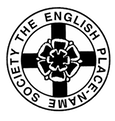Howgill Castle
Early-attested site in the Parish of Kirkby Thore
Historical Forms
- Hollegill 1190–1210 Hothf 1340 Lowth
- Holegille 1314 NWm
- Holgil(l), Holgyl(l) 1321 Inqaqd 1324 Carliol 1327 Banco 1332,1337 Pat 1545 Hothf
- Howgill 1567 Hothf 1589 FF
- Howgill Castle 1588 Hothf 1668 CliffordL 1671 Fleming 1823 M
Etymology
'Hollow ravine', v. hol 2 , gil . The castle (v. castel ) consisted of twin peel towers erected c. 1375, and the new hall was built about 1550 (cf. NWm 157, CW ix, 198 ff).

Leaflet | Tiles © Esri — Esri, DeLorme, NAVTEQ, TomTom, Intermap, iPC, USGS, FAO, NPS, NRCAN, GeoBase, Kadaster NL, Ordnance Survey, Esri Japan, METI, Esri China (Hong Kong), and the GIS User Community
Places in the same Parish
Other OS name
- High Moor
- Kirkby Thore Bridge & Hall
- Low Abbey
- Lowmoor Row
- Maiden Castle(lost)
- Priest Lane
- St Michael's Church
- Sleastonhow
- Spitals
- Stamp Hill
- Street Ho
- Town End & Head
- Blea Crag
- Burney Hill
- Currick
- Dunfell Hush & Mine
- Grange Moor
- Green Castle
- Green Pot
- Gullom Holme
- Gullom Holme Bridge
- Hanging Shaw
- Hard Hill
- Henrake Hush
- High Slack
- Hush
- Henrake Hush
- Iron Howe
- Keld Well, Keldwell Sike
- Kirk Ho
- Lord's Seat
- Marblescar Well
- Middle Tongue
- Milburn Beck, Fell, Forest, & Grange(lost)
- Mill Lane & Pond
- Mudgill Sike
- Reasley Moor
- Red Carle
- High & Low Slakes
- Thrushgill
- Underwood
- Windy Hall
- Birk Sike
- Eden Bridge
- Houtsay
- Millrigg Bridge
- The Moss
- Skygarth
- Ashton Lea
- Bowrang Plant
- Brackenbrough
- Bridge End
- Burwens
- Copping Hill
- Fits Well
- Keld Sike
- The Buildings
- Crowdundle Beck & Head
- Dun Fell
- Eller Gill
- Greatdale
- Swinethwaite Plant
